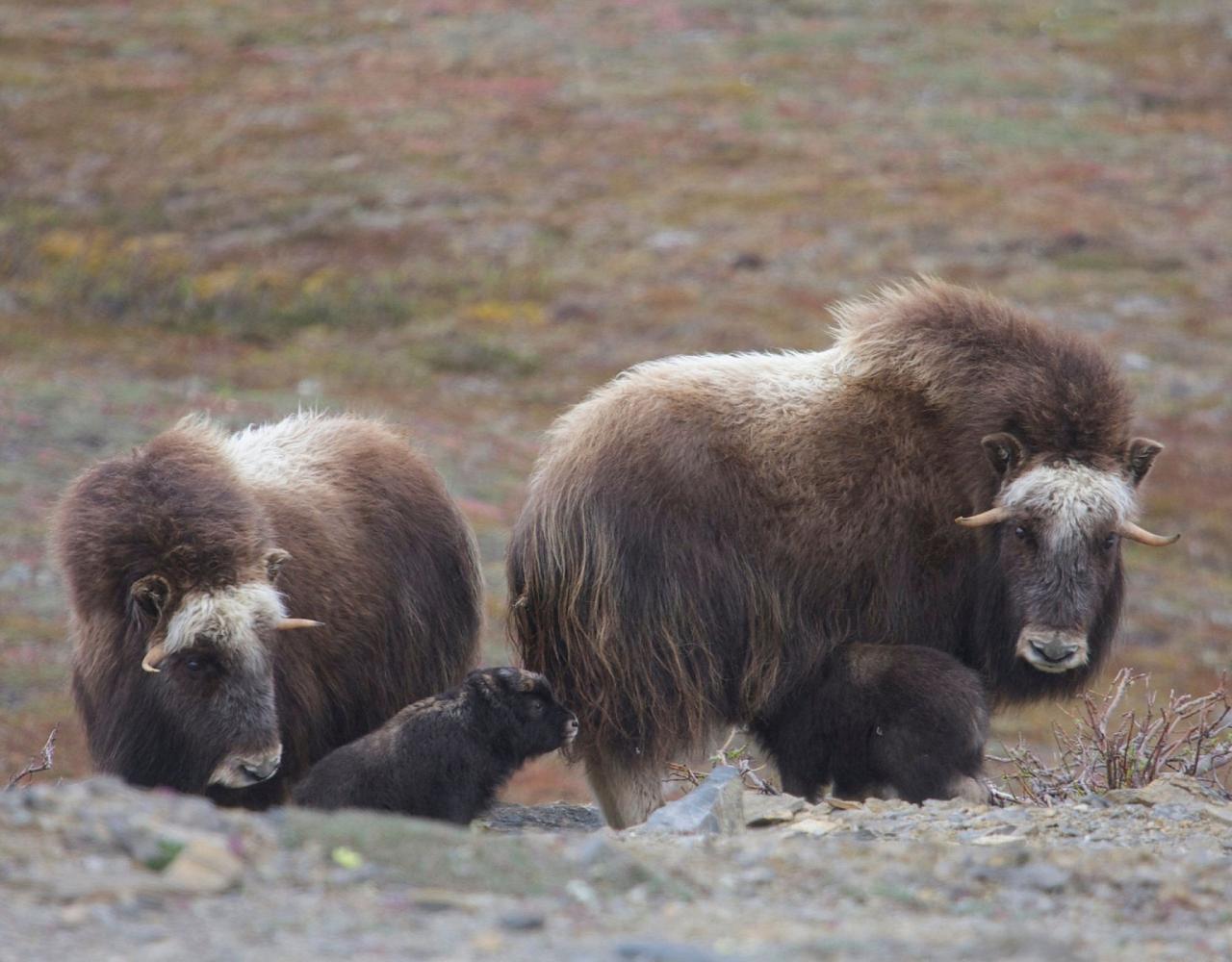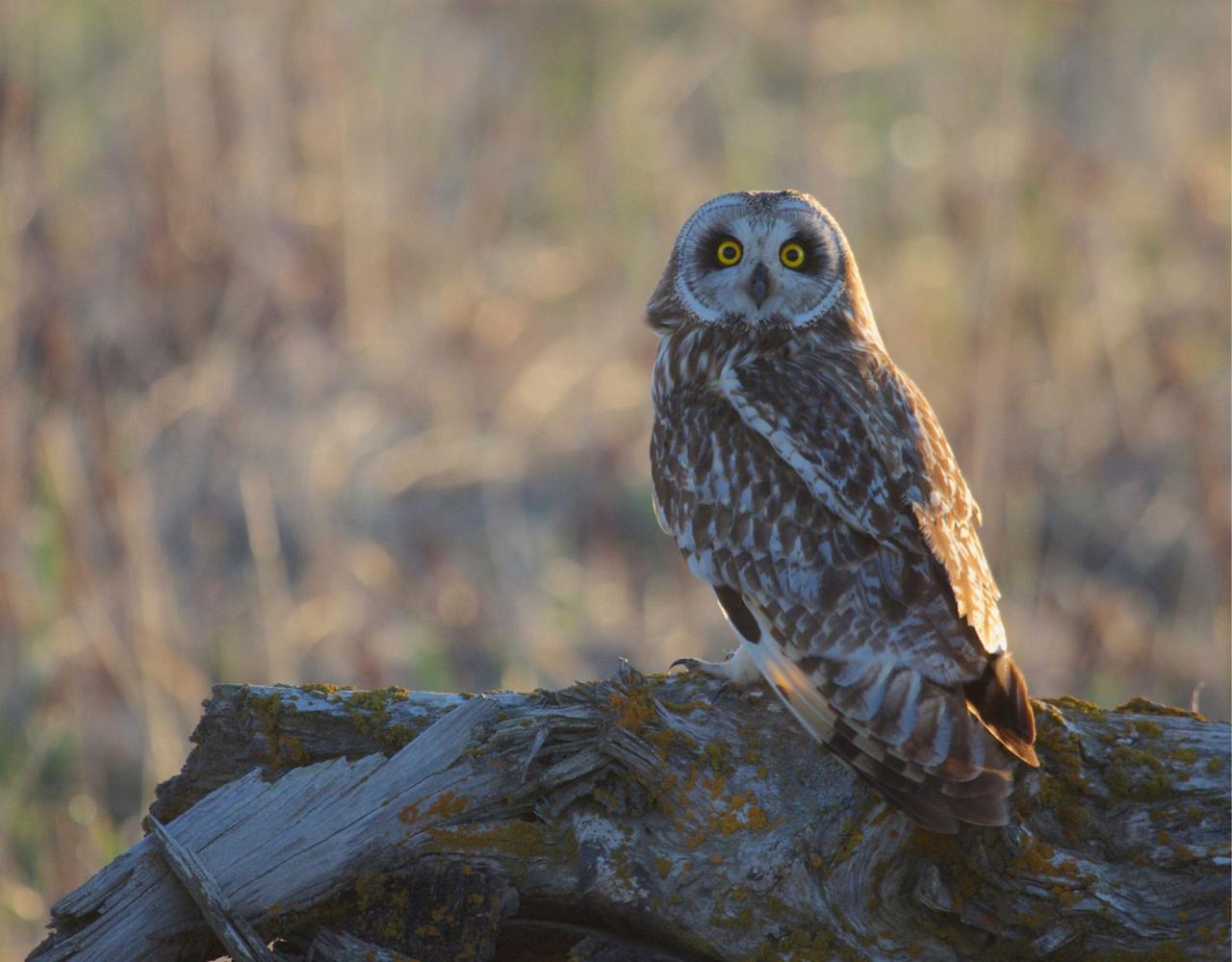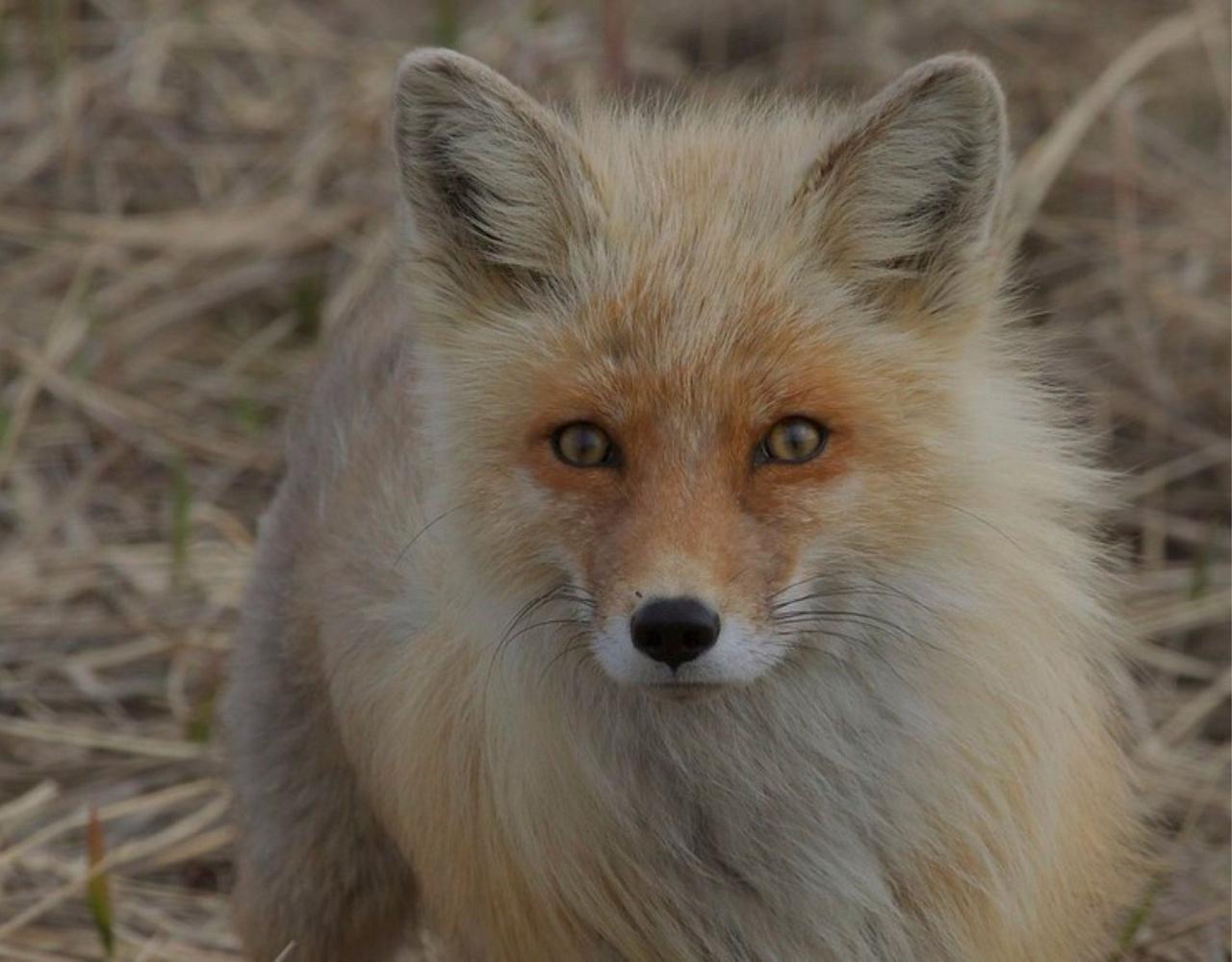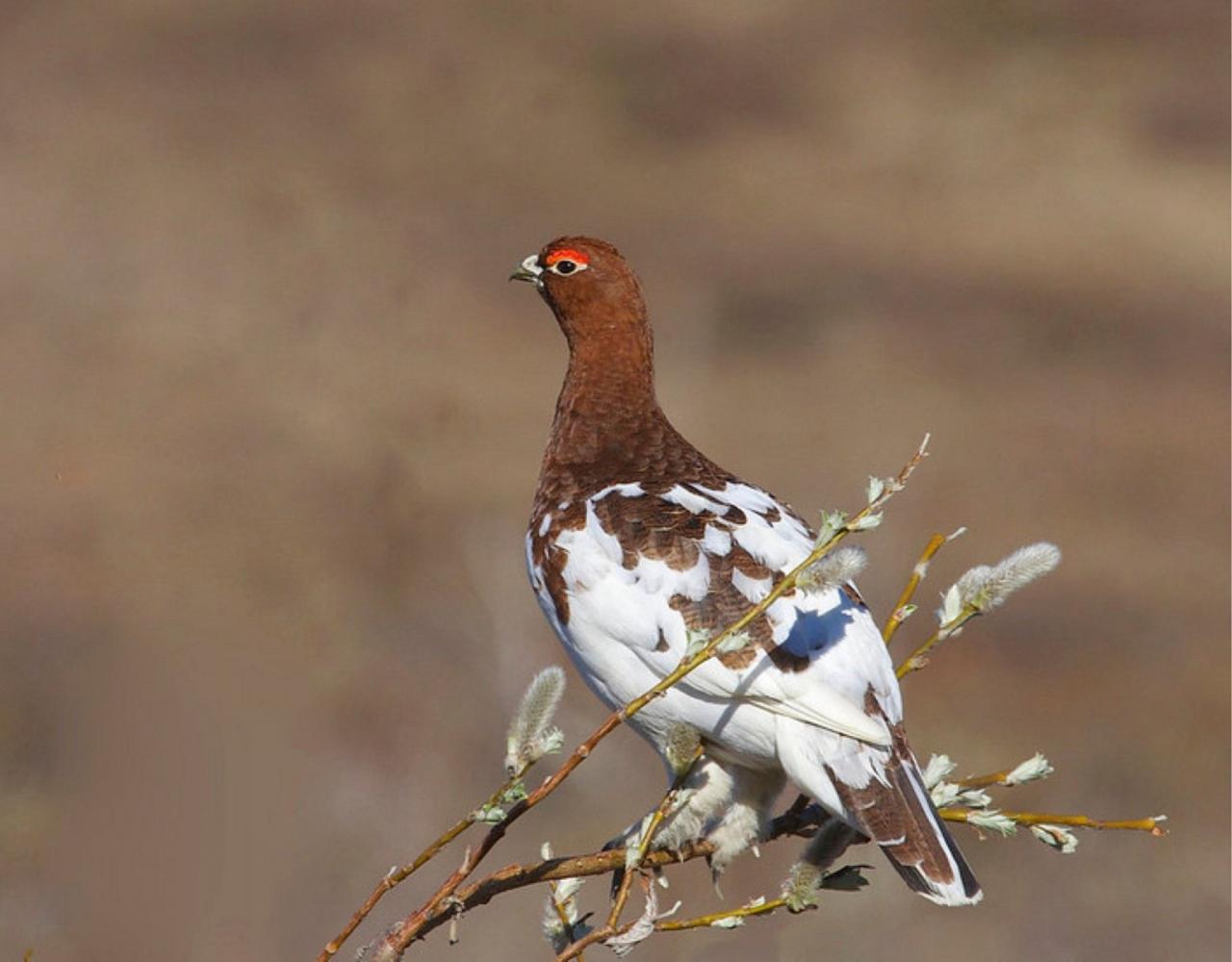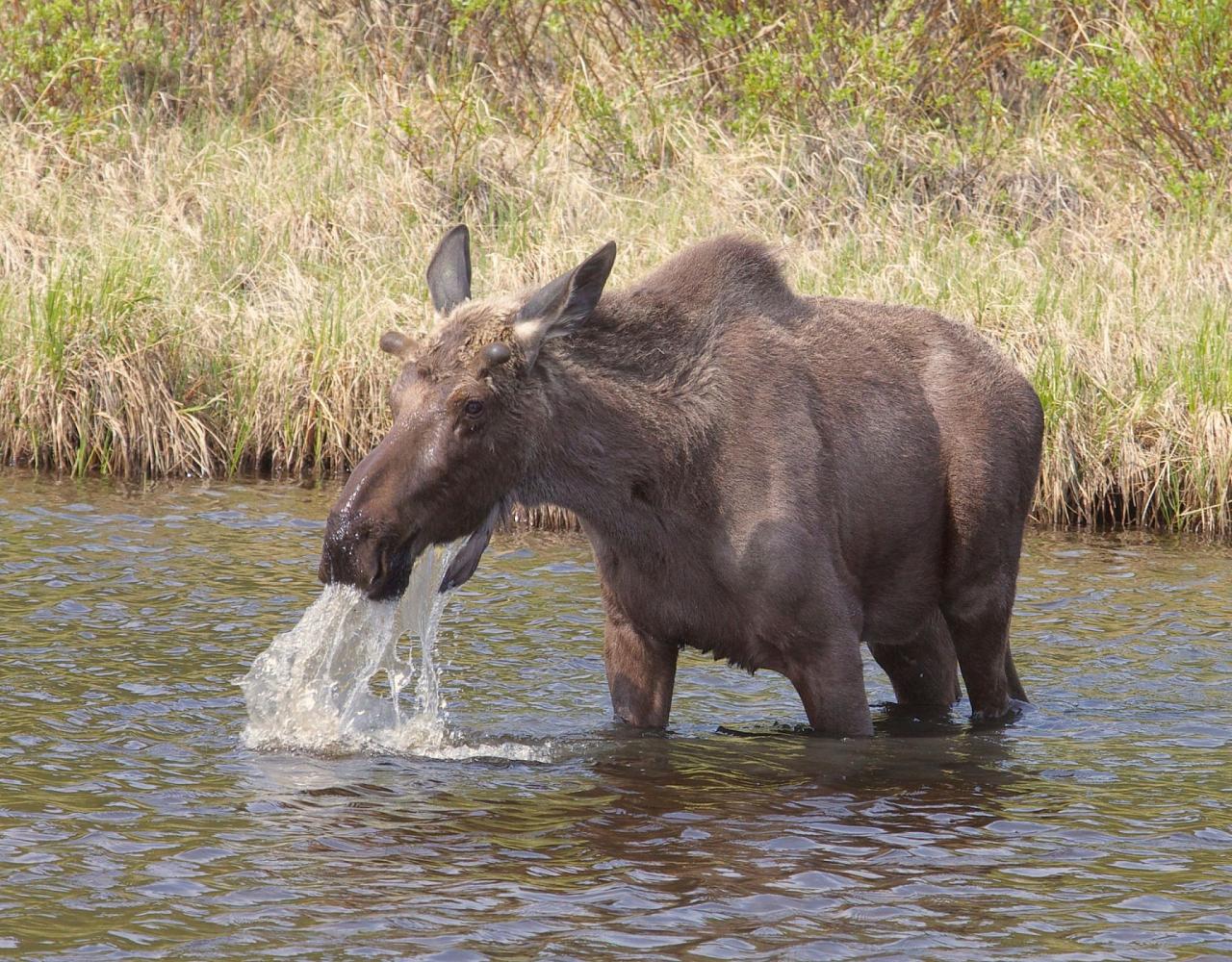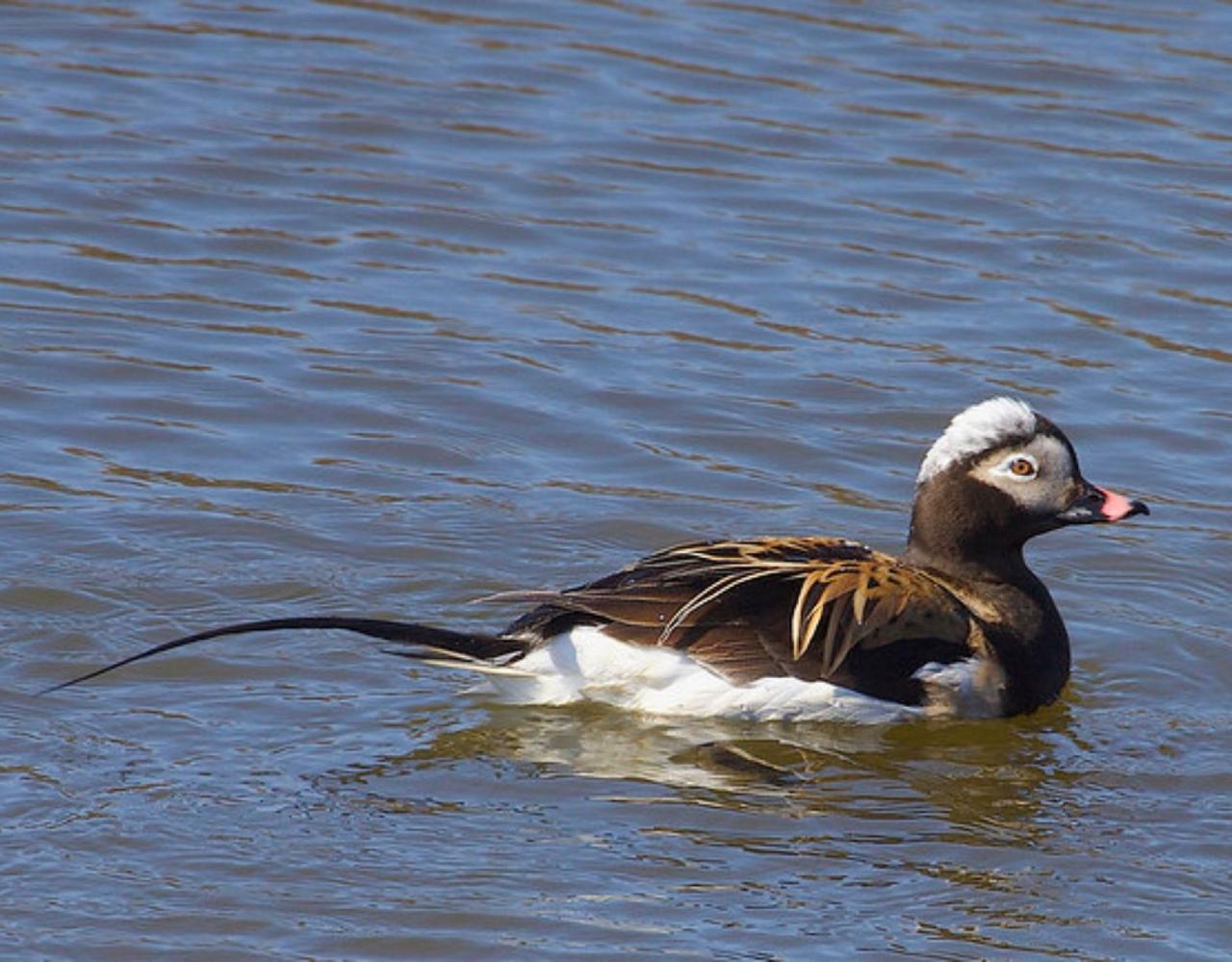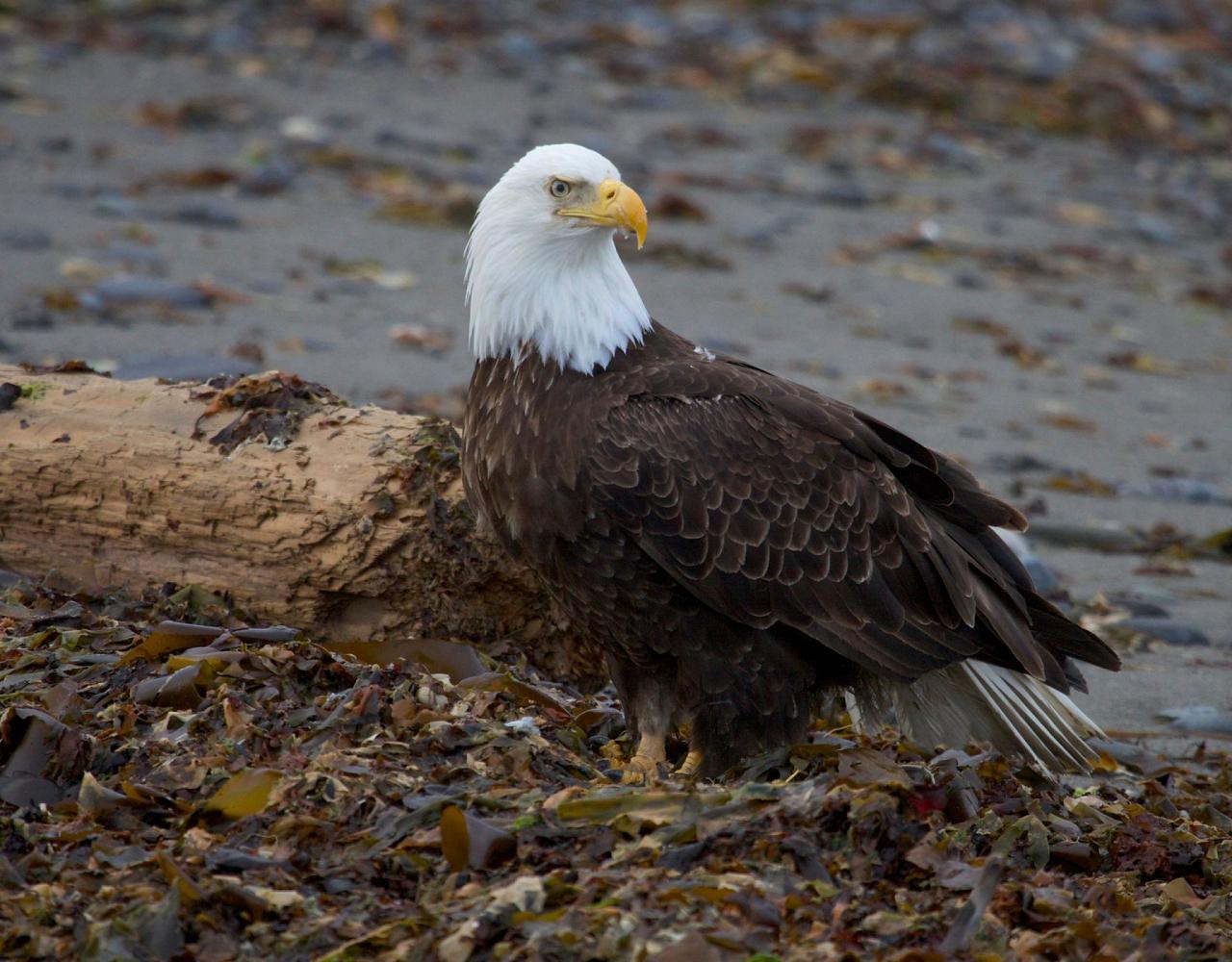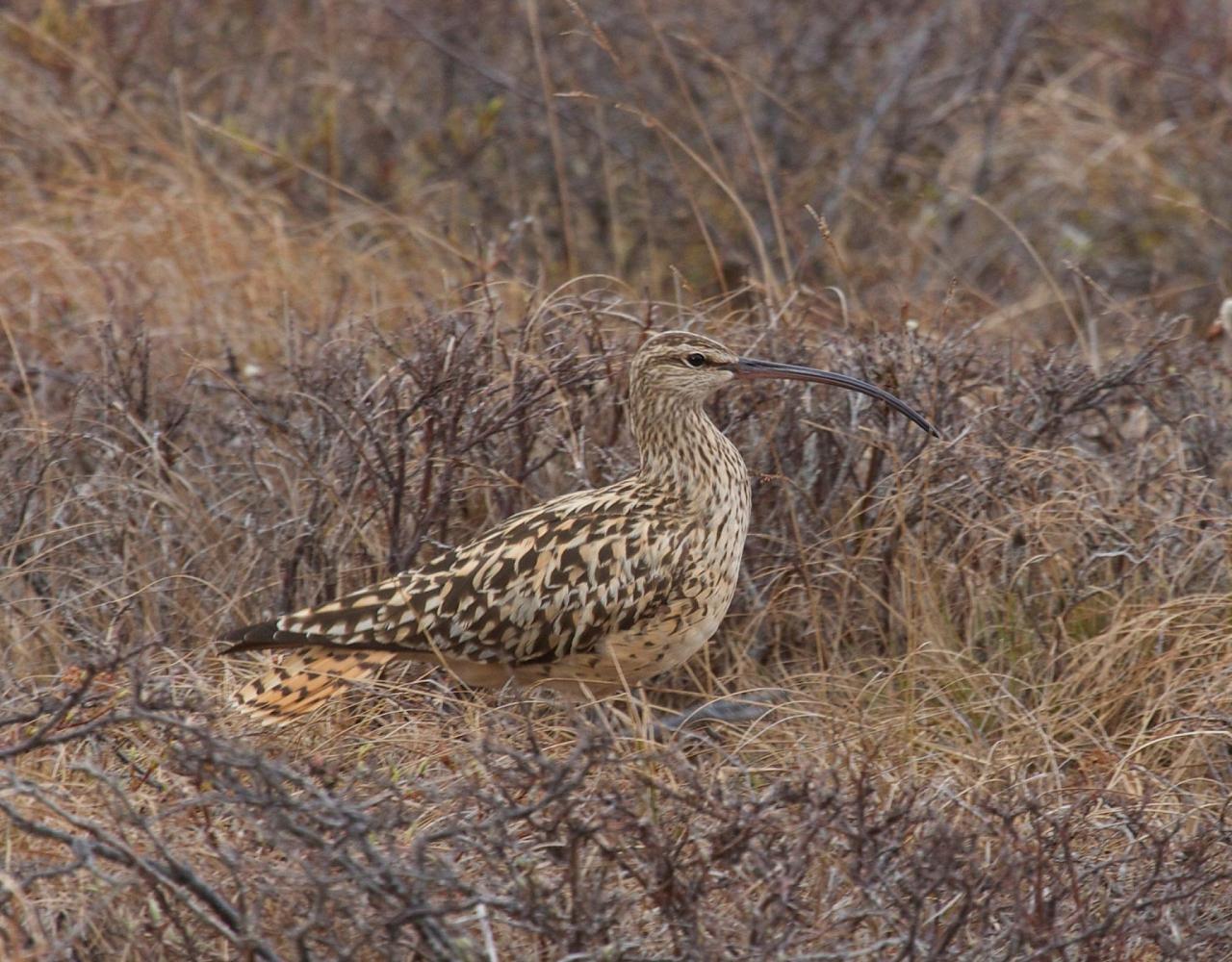Join James Petersen and Peg Abbott, two Naturalist Journeys guides with extensive experience in Nome, Alaska, for a fantastic week of exploring the fascinating tundra, lagoons, harbors, sea coast and mountains that surround this small northern village so famous among birders. Late May into early June is a special time to be in Nome; this is when the ice breakup typically occurs, leading to an explosion of wildlife that take advantage of the short summer season to breed and raise their young. From Moose and Muskox to huge flocks of Red Phalaropes, Western and Semipalmated Sandpipers and American and Pacific Golden Plovers, to Bluethroats, and Northern Wheaters … Nome has it all. While many tours, including our own Classic Alaska trip, stay only 3 to 4 days, this experience is 8 days, allowing time to watch the vibrant pulse of migration—no two days are alike!
Nome is isolated, reached only by air or sea. The sense of space and being literally perched on the edge of the world is inspiring! We spend time exploring the vast tundra and three roads that branch out from Nome. Close to town, we search the harbor for any migrating sea ducks, on hillsides with willow we look for Moose and hopefully come across large groups of large Muskox, their shaggy fur keeping them warm through the Arctic seasons. They have their young with them in this season—pretty adorable! Over the coming days, experience seeing massive flocks of newly arrived Western and Semipalmated Sandpipers mixed in with large Bar-tailed Godwits, a species that is known as the longest nonstop migrants in the whole bird world, while on Safety Sound. We have time to set up scopes and talk through the intricacies of shorebird identification, always on the lookout for species like Gray-tailed Tattler and more. Each day we mix up time at various habitats, looking for Tufted and Horned Puffins at sea watch sites, beautiful Long-tailed Ducks and up to four species of loons in local lagoons, as well as searching for extremely localized Bristle-thighed Curlews that breed along the Kougarok Road. We head out to Teller to look for Eastern Yellow and White Wagtails, Red Knots in breeding plumage, and maybe even a Gyrfalcon. Our goal is to be able to visit each of the three local roads as well as tundra and lagoon areas close town to witness the migration spectacle that draws birders from near and far every spring.
Can't get enough Alaska? This trip is timed to be able to pair with our Classic Alaska tour.

Tour Highlights
- Stand on the finish line of the Iditarod in downtown Nome; bird Nome’s deep water inner harbor just outside of town.
- Witness the ice break up along the Bering Sea, if our timing is right and witness the first barge arrival of the season, the surest signal spring has arrived for locals and cause of a big celebration.
- Witness massive flocks of migrating shorebirds at Safety Sound, with sandpipers, plovers and phalaropes winging their way north to breed, ready to claim territory and in full breeding plumage; our early timing favors seeing Red Phalarope, one of the most beautiful species.
- Bird the mouth of the Nome River, watching for Arctic and Aleutian Terns and multiple jeager species (Parasitic and Long-tailed) feeding just offshore.
- Scan for Grizzly Bear, Moose, and Muskoxen against a photogenic backdrop of remote and beautiful scenery.
- Walk up the ridge to look for Bristle-thighed Curlew, an extremely range restricted species.
- Watch Arctic Tern behavior on nesting colonies
- Have time to explore all three roads leading away from Nome, with the hope of locating Northern Wheater, Arctic Warbler, Eastern Yellow Wagtail and largest falcon in the United States, a Gyrfalcon.
- Spend time at the sea watch scanning for two species of puffins (Tufted and Horned) while also watching eiders and multiple species of gulls zip by; with luck finding other seabirds.
Trip Itinerary
Itineraries are guidelines; variations in itinerary may occur to account for weather, road conditions, closures, etc. and to maximize your experience.
Thurs., May 28 Arrival Day, Welcome to Nome!
Your guides meet you in Nome, ready to greet you, having done some scouting over the last few days. Nome is a treasure, a very authentic Alaskan outpost at of the end of the Iditarod; you can stand at the finish line, which crosses the main street of downtown! We meet all flights today at Nome’s small airport (serviced regularly by Alaska Air) and start off birding the port and surrounding areas close by. As rooms are ready, we check in to our hotel.
There are always intriguing species right in the Nome Harbor, an area of open water that could hold several species of waterfowl along with the expected gull species such as Glaucous and Glaucous-winged Gulls.
Next, we make our way east to a few small ponds on the outskirts of town that could hold more waterfowl and we stop to photograph an old gold mining rig—a relic of previous years when during the gold rush, Nome was a much bigger city and much harder place to get to. Red-throated Loon may be nesting, as well as Red-necked Grebe, getting an early start in the long daylight. Finally, we finish the day up driving up to some radio towers above town; willow thickets on this route can be a good place to check for Moose.
We base out of one hotel for the full week. It is located on Norton Sound, with large rooms in a convenient location from which we can walk to sample Nome’s several eclectic restaurants. Many of the restaurant owners are Asian and their skills at combining Korean food with pizza make it fun. There is a good bakery, and a grocery, though prices reflect that there is no road to Nome, all food must arrive by plane or barge.
Accommodations at the Aurora Inn & Suites (D)
Fri., May 29 Nome River Mouth | Safety Sound | Last Train to Nowhere
Today we explore east of town heading out towards Safety Sound, a legendary place for birding. Some of the best birding in Alaska can be done here, and early on we have really good chances to see Red Phalarope in good number, as well as Parasitic and Pomarine Jaegers, a host of shorebirds, and big flocks of ducks, loons, and Tundra Swan. As we work our way out there, we scan both the land and water for mammals that roam the open tundra, such as Muskox with potential for Brown Bear and maybe even a Moose. If the wind isn’t howling, we may have a quick stop at the sea watch where it’s possible to see large numbers of ducks and shorebirds migrating past, newly arrived on their wintering grounds. This is also a good place to keep an eye out for both Horned and Tufted Puffins and multiple species of jaegers while migrating Harlequin Duck bob in the surf of the Bering Sea.
From here, we continue out to spend the rest of the day birding Safety Sound. We scan the enormous, just arriving flocks of shorebirds, picking out Western and Semipalmated Sandpipers while also coming across three species of plovers. They are in breeding plumage, and we should see their breeding displays! The tern show can be fantastic here, with potential for Aleutian Terns mixing in with the more common Arctics. We also walk around a poignant historic site called the Last Train to Nowhere, where railroad engines are now bedded but not forgotten in the tundra. On the way back, we keep an eye out on the ocean in case one of up to three more common loon species may be spotted (Arctic, Pacific, and Red-throated) five species are possible (add Common and Yellow-billed) so we stay alert—if we’re lucky some may fly inland, right over our heads!
Accommodations at the Aurora Inn & Suites (B,L,D)
Sat., May 30 Vast Tundra & The Bering Straits | Teller
Today we spend the day working our way west of Nome, through some wonderful open tundra out to Teller. On our way out to Teller, we keep our eyes open, taking in the vast tundra scene with an eye for early blooming wildflowers as well as birds. Along the way we hope to come across more herds of Muskox, and two species of ptarmigan (Willow and Rock), which could still be in their all-white winter plumage. Also, along the road, we could come across a few herds of Caribou, grazing on the coastal tundra plain. At different creek crossings we look for American Dipper, which breed here.
If the birds have arrived and the road is in good condition, we can drive up to some hilltops to search for a small population of breeding Red Knot. Among the Red Knot, we also hope to see Snow Bunting that should be all black and white in their breeding plumage.
Once at Teller, we spend some time birding the spit which, if the water is open, can be a great spot for waterfowl, jaegers, and various species of shorebirds. The Bering Straits witnessed here can also hold Pelagic Cormorant, Common Eider, and scoters. In the past, this spot has been good for White Wagtail as well. Learn more about the region known as Beringia and its geological history as a land bridge between the old and new world. If we can only get part way up the road due to snow, we have another chance later in the week to try again; with so many hours of daylight, things change quickly in the Arctic spring.
If we are lucky while cruising the road up to Teller and back, we may come across the largest falcon in the world, a Gyrfalcon, which breeds here. Heading back, we make multiple stops both looking for more shorebirds and to take in the vast expense of scenery that isn’t found anywhere else in the United States. Keep in mind that a visit to Nome at this time of year is an adventure—we stay flexible and help you get prepared with adequate cold weather gear.
Accommodations at the Aurora Inn & Suites (B,L,D)
Sun., May 31 Kougarok Road | Salmon Lake | Coffee Dome
We explore the third road that leads out of Nome today, the Kougarok Road. As we work our way up the road, we make multiple stops to look for breeding shorebirds such as American and Pacific Golden Plovers, Long-tailed Jaeger, and more chances at the two ptarmigans. We pass Salmon Lake, which may still be partially frozen, and a number of small drainage pathways lined with shrubs. We continue on past open tundra, and local domestic reindeer herds may be grazing. This is a key area to look For Short-eared Owl. Scenery is off the charts, with grand views of mountains and an awesome sense of space. Finally, we do have a special stop at Coffee Dome. Here we look for Bristle-thighed Curlew, a rare shorebird that only breeds in Alaska, wintering on the south Pacific Islands. This is a short but steep hike, but well worth the effort!
After Coffee Dome, we stop along a few lakes further up the road, weather permitting, and scan for any inland ducks. Sometimes we can have scoters on these lakes. During this time, we keep our eyes open for more Muskox, as well as both Arctic Ground Squirrel and Snowshoe Hare. Brown Bear is also possible here as they look for Arctic Ground Squirrels to catch up on food after a winter’s hibernation.
We take in the vast scenery as we look for redpolls, jaegers, ptarmigans, and several breeding Arctic breeding; Bluethroats, Northern Wheatear, and Arctic Warbler. All three birds breed in extreme western Alaska and winter in Asia.
Accommodations at the Aurora Inn & Suites (B,L,D)
Mon., June 1 – Wed., June 3 Witness the Spectacular Bird Migration Through Nome!
So many tours feature just three to four nights in Nome, just enough time to venture out along each of the three roads and maybe pick up a few additional species near town. But migration is a flow and each day brings new species. After years of feeling melancholy about having to head on, James Petersen (who worked here doing bird surveys for several seasons) and Peg Abbott (veteran of many tours, starting in the early 1990s) decided there truly is No Place Like Nome and it deserved its own trip. Over these next three days, we venture out along each of the routes, sampling some areas in more detail, or venturing further out if yet to melt snow precluded our progress the first time. We will know what we still hope to see and can best plan our time accordingly. Safety Sound is a place one could park for these three weeks or so of full-on migration and know two days would be alike.
Accommodations at the Aurora Inn & Suites (B,L,D)
Thurs., June 4 Flights Back to the Mainland & Onward
Today our flock disperses, and we know that some of you will want to stay on in Alaska to explore. James Petersen greets our next Naturalist Journeys group, our regular June trip, and Peg departs on a morning flight with many of you. Anchorage is the hub we fly through, and a great city to explore. Grab a rental car and strike out for Homer, Palmer, Seward, or even Denali. Or connect to outbound flights, and home. (B)
Cost of the Journey
Cost of the journey is per person and based on occupancy: $4990 DBL / $5970 SGL, from Nome.
This cost includes: Accommodations for 7 nights, all meals as specified in the itinerary (B=breakfast, L=lunch, D=dinner), park entrance and other activity fees for activities as described in the itinerary, professional guide services, pre-departure materials and miscellaneous program expenses.
This cost does NOT include: Airfare to and from Nome, Alaska. Cost also does not include airport transfers, items of a personal nature such as laundry, telephone, drinks from the bar, or gratuities for luggage handling or personal services.
Going to Alaska is an adventure! These towns are in the far north and flights can be delayed due to fog or other inclement weather. We would encourage you to arrive into Nome a day early at your own expense.
Travel Details
Please plan to make air travel plans only after the minimum group size has been met. We will send you a confirmation email as soon as the trip has been confirmed.
Please plan to make air travel plans only after the minimum group size has been met. We will send you a confirmation email as soon as the trip has been confirmed.
Arrival and Departure Airport: Nome Airport (OME)
Arrival Details: Plan flights to arrive by 1:00 pm on May 28, 2026. (We will be birding near town so if there are late arrivals we can acoomodate it).
Departure Details: Plan flights to depart June 4, 2026 at your leisure.
Travel Tips: If you arrive early to rest up from your travels, we suggest booking an early night at our first night tour hotel, the Aurora Inn.
Naturalist Journeys recommends arriving a day or two early for this trip. Due to uncertainty about weather conditions and travel in Alaska it’s always a good idea to have some extra time buffered in.
Items of Note
A Note About the Pace & Atmosphere of This Journey
Nome is very remote, and while it has modern services like a grocery and hospital, it does not have all the conveniences of modern life. Vehicles we use are older, even a bit funky, kept together by good mechanics for many years since all new vehicles must come in by barge. Our hotel is clean, comfortable, with large rooms and good beds. Like all buildings on the water it has a weathered look. Some older wooden buildings speak of Nome’s past but many of the more modern buildings have the style we call Arctic “concrete,” seen from Russia to Finland to the Canadian Arctic as well, rugged construction for a rugged world. Food is plentiful, not fancy. There is beer and wine and there are liquor stores, native crafts for sale, fishermen bringing in fresh catch, and small-scale gold dredge operations. Nome is not the tourist Alaska, it is a special place where hearty residents make a living and find community. It’s a great chance to see another way of life and we embrace that. Both Peg and James have spent many hours in Nome, and part of the fun is meeting up with other birding colleagues all drawn like the avian migrants to be here in this glorious but brief time of year. Please bring a flexible attitude. We don’t do a lot of hiking but we are out in the field for long hours; we make many stops, we take picnics which sometimes have to be eaten in the van if weather is feisty. And if we get a calm evening, we may grab sandwiches and make a run out to Safety Sound, which is glorious in evening light. To participate, you should be able to be out long days, get in and out of vehicles multiple times, be patient to scan flocks of shorebirds and seabirds using scopes, and be ready to enjoy your comrades over some fun meals, tired at the end of very satisfying day.
Browse below for trip reports and species lists from past versions of this and other tours from this destination.
Alaska
- May 2011
- June 2012
- July 2012
- May 2013
- May 2014
- June 2015
- June 2016
- August 2016 (Southeast)
- August 2016 (Sampler)
- June 2017
- August 2017 (Southeast Alaska)
- August 2017 (Alaska Sampler)
- June 2018
- August 2018
- June 2019
- August 2019 (Alaska Sampler)
- June 2021
- August 2021
- June 2022
- July 2022 (Southeast Alaska Cruise)
- August 2022
- June 2023
- July 2023 (Southeast Alaska Cruise)
- August 2023
- June 2024
- July 2024 (Southeast Alaska Cruise)
- August 2024
- June 2025
- July 2025 (Southeast Alaska Cruise)
- August 2025 (Sampler)
Southeast Alaska Cruise
- June 2021
- July 2022
- July 2023
- June 2024
- July 2025
-
James Petersen
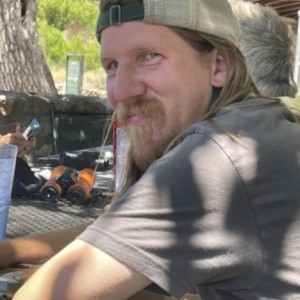
James grew up in New Jersey and started birding at a young age. He continued that passion by getting an undergraduate degree in Wildlife Ecology from the University of Maine. Since then, he has worked and birded extensively across the United States, including conducting point counts and banding ducks in Maine; identifying and counting waterfowl in Nebraska; counting migrating raptors in Texas, Arizona and Wyoming; and surveying for Northern Goshawks in northern California. The past three springs he has been a bird guide in the Chiricahua mountains in southeast Arizona, and he enjoys sharing his passion for birds with others. His favorite bird is the Red-headed Woodpecker.
Other trips with James Petersen
-
 Costa Rica Birding & Nature FULL - See our March departure!January 5 - 12, 2026, w/Pacific Coast extension
Costa Rica Birding & Nature FULL - See our March departure!January 5 - 12, 2026, w/Pacific Coast extension -
 New Mexico: Winter Birds & Grand Landscapes FULL - See New Mexico Nature & Culture in December!January 18 - 26, 2026
New Mexico: Winter Birds & Grand Landscapes FULL - See New Mexico Nature & Culture in December!January 18 - 26, 2026 -
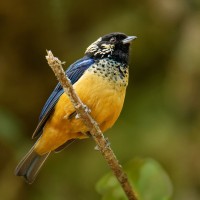 Western Panama: Tranquilo Bay FULL - See our March departure!February 7 - 14, 2026, w/Mt. Totumas extension
Western Panama: Tranquilo Bay FULL - See our March departure!February 7 - 14, 2026, w/Mt. Totumas extension -
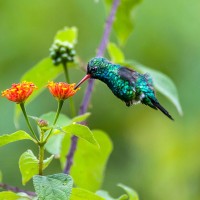 Northwest Argentina Only two spaces left!March 4 - 17, 2026, w/Iguazu Falls extension
Northwest Argentina Only two spaces left!March 4 - 17, 2026, w/Iguazu Falls extension -
 Classic Alaska: Birding & Wildlife: Anchorage, Nome, Seward & Kenai Fjords FULL - Check out Alaska Sampler in August!June 2 - 11, 2026
Classic Alaska: Birding & Wildlife: Anchorage, Nome, Seward & Kenai Fjords FULL - Check out Alaska Sampler in August!June 2 - 11, 2026 -
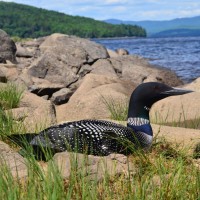 Summer in Maine: From Acadia to the NorthwoodsJuly 7 - 14, 2026
Summer in Maine: From Acadia to the NorthwoodsJuly 7 - 14, 2026 -
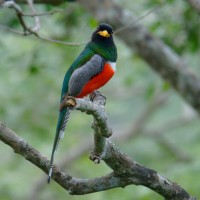 Arizona Monsoon Madness: Birding & Nature in a Season of Wonder!August 23 - 30, 2026
Arizona Monsoon Madness: Birding & Nature in a Season of Wonder!August 23 - 30, 2026 -
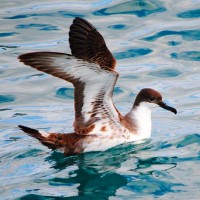 Maine's Monhegan IslandSeptember 6 - 13, 2026
Maine's Monhegan IslandSeptember 6 - 13, 2026 -
 Cape May: Fall MigrationOctober 13 - 19, 2026
Cape May: Fall MigrationOctober 13 - 19, 2026 -
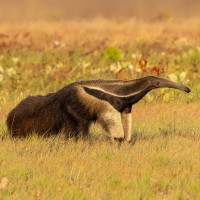 Guyana: Unspoiled WildernessNovember 5 - 17, 2026
Guyana: Unspoiled WildernessNovember 5 - 17, 2026 -
 Arizona: New Year’s Birding Blitz December 29, 2026 - January 4, 2027
Arizona: New Year’s Birding Blitz December 29, 2026 - January 4, 2027
-
-
Peg Abbott
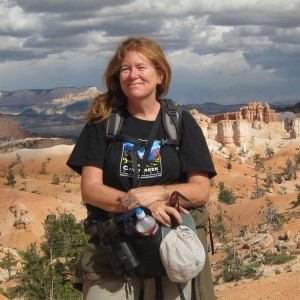
Peg Abbott is the owner and lead guide of Naturalist Journeys, LLC. She has been designing, guiding, and organizing natural history tours for more than 25 years, working for the National Audubon Society and other organizations before launching Naturalist Journeys, LLC in 1998. Her work has taken her from Alaska to Africa and Argentina, as well as many other locations around the world. She has conducted research on several bird and mammal species and keeps a close interest in Yellowstone and Mexican wolf reintroduction projects. Her interests include all aspects of natural history and geology. After 20 years in and around the Yellowstone area, Peg relocated in 2003 to the birding mecca of Portal, AZ.
Photo credit: Carol Simon
Other trips with Peg Abbott
-
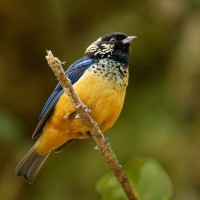 NEW! New Year at Tranquilo Bay FULL - See our Christmas Week at Trinidad's Asa Wright Nature Centre!December 30, 2025 - January 7, 2026, w/Mt. Totumas extension
NEW! New Year at Tranquilo Bay FULL - See our Christmas Week at Trinidad's Asa Wright Nature Centre!December 30, 2025 - January 7, 2026, w/Mt. Totumas extension -
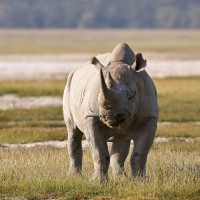 Tanzania: Wildlife & Birding Safari FULL - Ask us to put you on the list for 2027.February 9 - 22, 2026, w/Amboseli & Nairobi National Parks extension
Tanzania: Wildlife & Birding Safari FULL - Ask us to put you on the list for 2027.February 9 - 22, 2026, w/Amboseli & Nairobi National Parks extension -
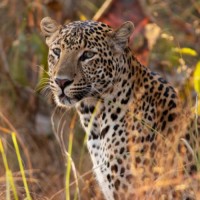 Big Cats & Breathtaking Birds of India FULL - Check out Island of Wonder: Birds & Nature of Sri Lanka!March 9 - 26, 2026, w/Pallas's Cat extension
Big Cats & Breathtaking Birds of India FULL - Check out Island of Wonder: Birds & Nature of Sri Lanka!March 9 - 26, 2026, w/Pallas's Cat extension -
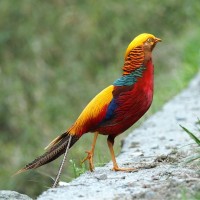 China’s Sichuan Basin & Tibetan Plateau FULL - Check out Thailand: Birding & Nature!June 11 - 26, 2026
China’s Sichuan Basin & Tibetan Plateau FULL - Check out Thailand: Birding & Nature!June 11 - 26, 2026 -
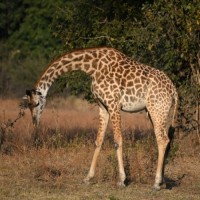 In-Depth & Incredible Africa: Botswana & Zambia Full! See our Enchanting Okavango tour in August.July 9 - 27, 2026
In-Depth & Incredible Africa: Botswana & Zambia Full! See our Enchanting Okavango tour in August.July 9 - 27, 2026 -
 Peru: Cusco to Manú National Park A private tour for Tucson Bird Alliance - FULL!October 2 - 17, 2026, w/Machu Picchu extension
Peru: Cusco to Manú National Park A private tour for Tucson Bird Alliance - FULL!October 2 - 17, 2026, w/Machu Picchu extension -
 Biodiverse Bhutan: Birds, Mammals & BeyondNovember 6 - 21, 2026, w/Panna Tiger Reserve extension
Biodiverse Bhutan: Birds, Mammals & BeyondNovember 6 - 21, 2026, w/Panna Tiger Reserve extension -
 Arizona: New Year’s Birding Blitz December 29, 2026 - January 4, 2027
Arizona: New Year’s Birding Blitz December 29, 2026 - January 4, 2027
-
Essential Information +
Packing List +
Suggested Reading List +
Useful Links +
Photo credits: Banners: Horned Puffin (Bryan Calk), Nome Scenic (Greg Smith), Western Sandpiper (Greg Smith)




